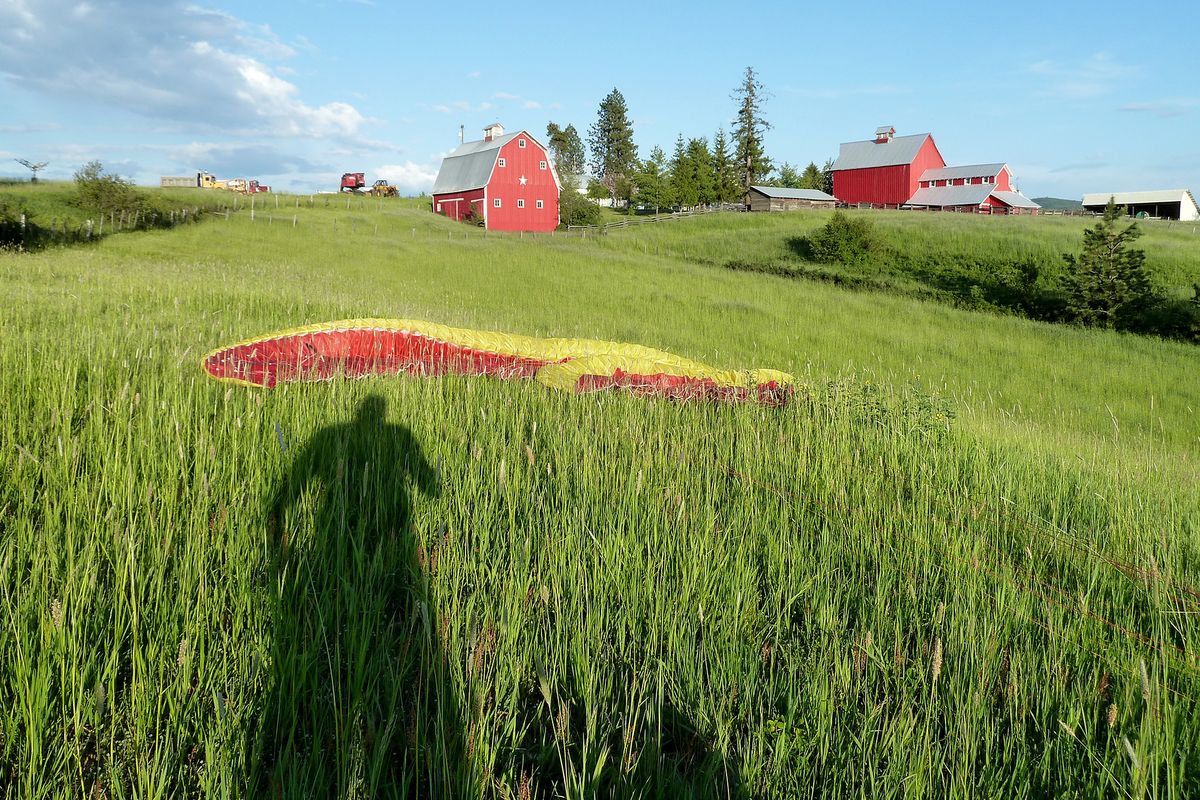Paragliders: Free as the wind in Washington

Although he’d been paragliding for 11 years, setting a record had never been in Matt Senior’s flight plan.
But on May 31, using sophisticated weather data bases compiled by the University of Washington and paragliding websites, the Seattle pilot noticed a rare combination of thermal activity and wind direction.
The clouds were aligning in virtually the same pattern as they had on Aug. 6, 2013, when Canadian Alex Raymont launched from the Chelan area and set the Washington free flight distance record of 155 miles.
“I hadn’t realized going that far from Chelan was even possible until he set that record,” said Senior, 37. “I fly for fun; but when I saw the exact same forecast, I thought I’d give the record a go.”
His educated hunch was good: 7 hours and 47 minutes after taking off from the popular launch site on Chelan Butte, Senior landed near Deary, Idaho.
He logged 180 miles on his GPS unit in a journey fraught with logistics and luck.
Raymont had paved the way by proving that a rare wind pattern could allow a paraglider to hop the thermals of the Columbia Basin while avoiding the restricted airspace of Fairchild Air Force Base and Spokane airports.
Morgan Hollingsworth, a skilled flyer who launched with Senior lost his lift and landed after flying 127 miles – while Senior stayed aloft.
“We crossed over the Columbia River together but went to different thermals on the flats,” Senior said, noting that they each played on different instincts. They soon drifted out of sight, communicating by radio with each other and the “chasers” in vehicles below.
“I could see it was a special day; 50-60 percent of the sky was perfect cumulus,” Senior said. “We fly under those clouds. That’s where the lift is.”
Like ocean fishermen who spot swarming sea birds that signal good fishing, free flight pilots also keep an eye out for birds.
“We absolutely look for eagles, turkey vultures and red-tailed hawks,” he said. “If the birds are soaring in the sky, that’s probably rising air.”
But over the flats and through the dust of the Columbia Basin, he saw very few birds on May 31. The timing and habitat wasn’t right for that advantage.
He’d started at 11:07 a.m. after waiting for the air to warm for optimum lift – about the same time golden eagles might launch to hunt for the same reason.
Seven hours later, as he came within five miles of the record distance, the sun was getting lower toward the horizon and not generating as much heat. “I didn’t really know if I could stay up at that point, but then I caught another thermal.”
He landed on a farm east of Deary and reunited with his wife, Heather St. Clair, who’d endured 12 hours in the car that day delivering him to the launch and following his flight with a satellite tracking device as she navigated the roads.
“The technology has made it a lot easier,” Senior said.
A variometer constantly monitored lift, sink and ground speed as Senior analyzed wind speed and yo-yoed from one thermal to the next. Audible beeps let him know when he was gaining or losing altitude. He sometimes climbed several thousand feet in a swoop. Once he dropped as low as 1,000 feet above the ground.
Accelerating beeps were music to his ears. Decelerating beeps meant the search was on for another column of rising air.
Senior flies a high-performance paraglider with 24 meters of fabric and a higher glide ratio than standard models. “For every mile above ground I can glide about 10 miles,” he said. “An intermediate glider might go 8 miles. The beginner models have more passenger safety where I have to be flying my glider all the time.”
Senior said the best part about his record flight is the confidence it gave him.
“Where I landed, I know it’s possible to go maybe 30-40 miles farther,” he said. “Maybe I’ll have another go at it when I see the right weather – or maybe somebody else will.”